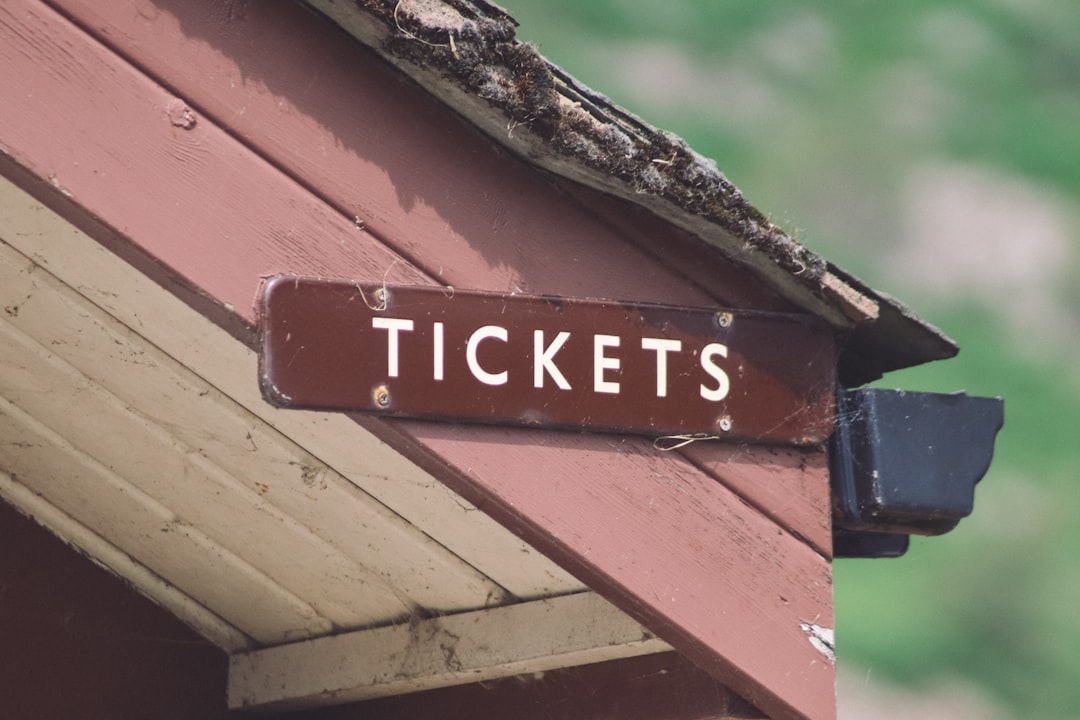

Engage prospects with a scan and streamline customer engagement with FREE QR code marketing tools by Sona – no strings attached!
Create a Free QR CodeFree consultation

No commitment

Engage prospects with a scan and streamline customer engagement with FREE QR code marketing tools by Sona – no strings attached!
Create a Free QR CodeFree consultation

No commitment
Event ticketing platforms have become crucial for orchestrating seamless experiences from registration to event entry. However, many organizers still struggle to maintain attendee engagement and ensure smooth onsite flows. A common frustration appears when high-value prospects attend or interact without leaving traceable information, which results in missed follow-up opportunities and incomplete attendee records.
With competition among digital ticketing systems increasing and attendee expectations rising for convenience and interactivity, bridging the physical to digital gap is now essential. QR codes are redefining how event ticketing platforms address these challenges. For organizers lacking visibility into anonymous attendee behaviors or struggling with outdated manual check-ins, QR codes accelerate entrance lines, empower personalized pre-event interactions, and unlock hidden attendee data for informed follow-up.
This article explains how QR codes can be strategically deployed within event ticketing platforms to drive attendee interaction, enhance security, streamline check-ins, and provide detailed analytics. By addressing modern pain points such as lost leads, fragmented data, and missed cues for cross-sell, you will discover practical frameworks for leveraging QR codes throughout your event lifecycle.

QR codes bridge the gap between physical event touchpoints and the digital experiences today’s attendees expect. Many event planners still rely on printed tickets or manual check-ins, which introduces friction and leaves high-potential prospects untracked in the CRM. This broken link often results in valuable attendee data slipping through the cracks, which undermines re-engagement and personalization efforts.
The path to higher engagement begins with replacing analog processes with QR-powered, trackable workflows. Swap paper tickets for mobile QR passes that double as identity and preference signals. Replace static schedules with scan-to-view dynamic agendas that reflect real-time room changes or speaker updates. Convert manual sign-up sheets and clipboards into scan-to-register moments for workshops, meetups, or sponsor demos. Each scan becomes a data point that improves the attendee experience while feeding your follow-up engine.
By turning every scan into a usable signal, QR systems surface interest from previously anonymous participants. This enables targeted outreach, tailored content, and faster follow-up, which collectively boost engagement and improve event ROI.

Digital ticketing systems in the event space are evolving rapidly, yet organizers frequently struggle with incomplete attendee data and a lack of visibility into onsite interactions. Many high-interest participants remain unknown and cannot be nurtured post-event, which leads to lost revenue and weaker event ROI. QR codes give organizers a simple, low-friction way to convert onsite attention into measurable digital actions.
QR codes can be added to badges, lanyards, session signage, printed agendas, wristbands, and even food and beverage vouchers. They turn every surface into an instant call to action: check in, save the schedule, claim an offer, rate a session, or request a demo. Each scan tells you who engaged, where they were, and what they wanted, which provides the insights needed to improve the experience while fueling performance marketing.
For event ticketing platforms, the result is a unified engagement layer that enriches attendee profiles, accelerates entry, and exposes upsell or renewal signals that would otherwise be missed.

Event organizers manage diverse needs across the attendee journey, from pre-registration to post-event nurturing. Choosing the right QR format for each moment ensures simple experiences for attendees and reliable data capture for teams. Formats can be mixed throughout the event to match the context and desired action.
Prioritize dynamic QR codes for most event use cases. Dynamic codes allow destination changes without reprinting and produce granular analytics such as scan time, location, and device. Static codes are suitable for evergreen content that will never change, such as a general help center or long-lived brand brochure.
With Sona QR, you can generate these formats, route traffic dynamically, and consolidate analytics across placements and events. The combination of flexible formats and centralized management is what turns scans into reliable insight and action.
Event ticketing platforms often excel at the entry experience but overlook growth moments hidden within the event and afterward. QR codes reveal intent across the entire journey, which helps marketing, sales, and customer success teams act when interest is highest. The key is aligning placements with likely buyer signals and making the next step obvious.
Identify places where engagement happens but is not recorded. These are the black holes that QR codes can illuminate: a crowded session with no sign-in, a popular lounge with no lead capture, or a sponsor activation with no way to measure who participated. Add clear calls to action and route scans to short, high-value destinations such as a calendar scheduler, content hub, or exclusive offer.
When QR codes are thoughtfully mapped to growth inflection points, your platform can activate upsell, cross-sell, and renewal campaigns with much higher precision.

Missed engagement signals are a leading cause of lost value for event organizers. QR codes convert those signals into structured data that fuels personalization and revenue outcomes. Focus on use cases that eliminate friction for attendees while producing clear next steps for your team.
Start with three foundational use cases that pay off quickly. Then expand to advanced applications such as in-session polling, sponsor lead routing, and scan-triggered prize drops. Each use case should tie to a measurable outcome like faster entry, higher satisfaction, or more qualified leads for sales.
By focusing on these use cases, organizers can build a repeatable pipeline of insight and action: a faster front door, richer in-event interaction, and stronger post-event conversion.
Fragmented or out-of-date attendee data is a barrier to personalized post-event outreach. If engagement actions are not tracked, many best-fit prospects never enter nurture or sales sequences. QR codes solve this by capturing intent data, context, and timing for each scan, which feeds audience creation and retargeting with real behavior rather than guesswork.
Deploy multiple QR codes across the journey, then segment by action, location, and timing. For example, a scan at a technical workshop implies product interest, while a scan in a VIP lounge may indicate buying authority. Use these signals to prioritize follow-up and deliver content that matches the moment.
In event ticketing, useful audience distinctions include first-time attendees versus repeat attendees, in-person versus virtual participants, VIPs versus general admission, sponsor staff versus prospects, and buyers versus influencers. With Sona QR, each code becomes a smart entry point that tags scanners in real time and pushes them to the right follow-up.
Siloed data prevents organizers from understanding the full attendee journey or spotting churn risks. When QR codes are deployed across collateral and screens, they unify tracking and automate personalized follow-ups. Your print, digital, and onsite experiences begin to work together, which raises engagement while lowering cost.
Build consistency in your calls to action and brand treatment. The same visual frame and CTA should appear on the lobby banner, the seat-back card, and the follow-up mailer. Use UTMs and dynamic routing to route traffic by placement, then compare performance inside a single analytics view. With Sona QR, you can manage codes centrally and sync results to your CRM and advertising platforms.
QR codes serve as the offline on-ramp to your digital engine. Centralized management and analytics make it possible to compare performance across channels and continuously improve placements, copy, and offers.
Start with a single business outcome that aligns with a real attendee friction point. Common goals include faster entry, stronger session engagement, or more sales-ready leads for sponsors. In event ticketing, an ideal starting point is mobile ticketing with QR check-in that also captures attendee consent for communications. For ideas, see this ticketing guide.
Choose dynamic QR codes as your default, since event content and placements often change. Static codes are appropriate for long-lived destinations that will never need edits, yet they limit attribution and flexibility.
Design your code for the environment in which it will be scanned. Busy lobbies, low-light rooms, and fast-moving lines require larger codes, strong contrast, and short calls to action. Brand the visual frame and keep the promise simple.
Roll out QR codes where missed engagement is most likely. Start with entrance points, session doors, and partner activations. Layer codes on lanyards, table tents, and seat-back cards, then test placements and creative to improve scan rates.
Connect scans to a central dashboard so you can compare performance and take action while the event is live. Use Sona QR to monitor scans by time, placement, device, and audience. Trigger workflows that notify staff when high-value accounts engage.
This approach ensures every prospect is accounted for and follow-up actions are evidence based. Over time, your QR playbook becomes a growth engine that compounds results across events.

For event ticketing platforms, guessing at attendee engagement limits the ability to prove ROI. Traditional analytics often miss intent signals such as a VIP attendee who scanned a sponsor code but never filled a form. QR-enabled workflows fill these gaps by connecting scans to identities, content interactions, and downstream conversions.
A modern analytics stack translates raw scans into business results. It tracks who scanned, where and when they scanned, and what happened next. Tie QR activity to outcomes such as session attendance, meeting bookings, trial starts, and purchases. With Sona QR and Sona, you can unify this data and attribute revenue to QR-triggered journeys.
With the ability to connect scans to revenue, organizers can defend budgets, improve partner value, and continuously enhance both attendee experience and commercial outcomes.
Scaling QR success depends on good hygiene, thoughtful placements, and automation. Focus on the tips that align with your media mix and post-event workflows. Most importantly, make the value of scanning obvious at every touchpoint and follow up quickly when interest is expressed. For practical advice from the field, see this Reddit discussion.
Choose tactics that match event realities. Large festivals may rely on wristbands and stage screens. Corporate conferences may depend on badges, table toppers, and breakout rooms. In each case, tailor QR size, CTA, and destination to the environment and intent.
Creative deployment examples include QR codes on seat backs that open a merch discount, QR codes on wristbands for VIP upgrade offers, and QR-enabled lanyards that unlock a scavenger hunt for sponsor prizes. Start creating QR codes for free, then expand into advanced routing and attribution as you scale.
QR codes are now a mission-critical component in building exceptional attendee experiences with event ticketing platforms. They address long-standing problems such as anonymous prospects, lost lead signals, and incomplete account data. When every scan unlocks a digital step and a data signal, static moments become interactive journeys that are easy to measure and monetize.
A cohesive QR strategy lets teams capture and act on every valuable touchpoint, from accelerating entry and energizing sessions to surfacing hidden upsell opportunities. Each scan deepens understanding and enhances targeting, which ensures no opportunity is overlooked as you move from offline engagement to digital relationship building. The effect compounds across events as your playbook improves and your datasets grow richer.
Embedding QR codes throughout event operations delivers more than operational efficiency. It cultivates instant engagement, reveals previously hidden intent signals, and enables end-to-end measurement of key moments. With Sona QR for code generation, routing, and analytics, and Sona.com for attribution and identity resolution, your team can connect scans to revenue and make QR codes a central driver of performance. The organizers that master these workflows will identify high-value prospects earlier, reduce missed opportunities, and compete at the highest standard of attendee experience and measurement.
QR codes have transformed event ticketing platforms from simple entry tools into powerful engagement drivers. By streamlining ticket validation, enhancing personalized experiences, and enabling real-time interaction, QR codes boost customer acquisition and deepen attendee engagement. Imagine effortlessly tracking which marketing channels bring the most attendees and instantly updating your campaigns without the hassle of reprinting tickets.
With Sona QR, you gain access to dynamic, trackable QR codes that connect every scan directly to actionable insights and revenue. Whether it’s speeding up entry lines, offering exclusive content, or gathering valuable attendee data, Sona QR empowers your event ticketing platform to deliver seamless, high-impact experiences.
Start for free with Sona QR today and transform every ticket scan into a meaningful connection and measurable growth.
The article highlights platforms like Sona QR that offer centralized QR code generation, tracking, routing, and integration with CRMs, making them top choices for event ticketing.
QR code tickets enable fast, trackable check-ins by scanning unique codes that confirm attendance, reduce fraud, and connect attendee identity to onsite activity for seamless entry.
Look for QR code integration with dynamic updates, real-time analytics, centralized management, CRM syncing, multi-channel deployment, and automation for follow-up and attendee engagement.
They streamline check-ins, capture detailed attendee data through QR code scans, enable personalized interactions, track session engagement, and facilitate targeted post-event follow-up.
Digital ticketing systems improve entry speed, reduce manual errors, provide rich analytics, enable dynamic content updates, increase attendee engagement, and support automated marketing and sales workflows.
Use Sona QR's trackable codes to improve customer acquisition and engagement today.
Create Your FREE Trackable QR Code in SecondsJoin results-focused teams combining Sona Platform automation with advanced Google Ads strategies to scale lead generation

Connect your existing CRM

Free Account Enrichment

No setup fees
No commitment required

Free consultation

Get a custom Google Ads roadmap for your business






Launch campaigns that generate qualified leads in 30 days or less.
